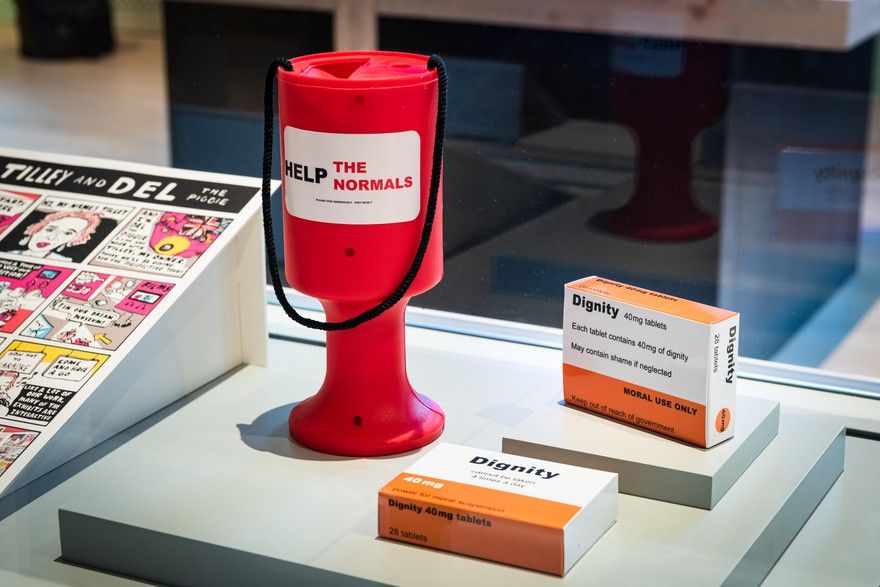This London Gallery Is Working to Be One of the World’s Most Accessible Museums
The Wellcome Collection’s latest permanent exhibition focuses on design features and curatorial approaches suggested by individuals with disabilities
/https://tf-cmsv2-smithsonianmag-media.s3.amazonaws.com/filer/0b/12/0b124e08-7a46-4310-b071-3c218bc66d37/default_2.jpg)
The Wellcome Collection—a free museum and library dedicated to the intersection of science, medicine and art—is widely considered one of the English capital’s most inclusive cultural institutions. (Its backer, the Wellcome Trust, is Europe’s second-richest charitable foundation.) But the institution’s latest permanent exhibition has outdone itself, prioritizing accessibility to an extent rarely seen in museums and galleries.
As Alex Marshall reports for the New York Times, Being Human, set to replace a previous permanent exhibition titled Medicine Now, worked hard to implement curatorial strategies and design elements suggested by disability activists, as well as consultants specializing in what a press release calls “the representation of disability and difference.” There are video screens are positioned with wheelchair users in mind. Accessible audio and Braille guides are available for visitors. Artifact models are intentionally tactile and display plinths are painted black to contrast with pale oak flooring.
“If you don’t need them, you might not notice them,” curator Clare Barlow explains to Marshall. “But if you do, they’re there.”

Richard Sandell of the University of Leicester’s Research Center for Museums and Galleries tells the Times’ Marshall that Being Human tackles the question of what it means to be human in the 21st century. Importantly, he says, it adopts a people-centric approach to the question by focusing on humans, not technology. The section devoted to prosthetics, for example, delves into the stories of those who use the artificial limbs rather than showcasing the engineering that powers the technology.
The show is divided into four sections: genetics, minds and bodies, infection, and environmental breakdown. Among the objects on display are a fecal transplant kit, a tank filled with zebrafish, a work that simulates the smell of extinct plants, and a perfumed sculpture suggestive of the scent of breast milk. Also on view are a Yinka Shonibare sculpture called “Refugee Astronaut”; a recording of Katharine Araniello’s “Pity” performance piece, which found the artist begging while dressed as a statuette seen on cerebral palsy charity collection boxes during the 1970s; and Dolly Sen’s “Dignity,” a prescription pill box that proclaims, “Dignity cannot be taken 4 times a day.” As Sen, a performer, poet and filmmaker, tells the Guardian’s Claire Armitstead, “Dignity means … not begging to be heard, to be cared for. And that is a fight many people who are in the mental health system understand.”
Speaking with the Times, Barlow explains that the Wellcome Collection opted to make its flagship exhibition as accessible as possible in part because the subjects tackled in the show, from gene editing to climate change, can be difficult to discuss. Museum staff, she says, wanted to ensure the physical space in which these topics were addressed would be simple to navigate for all.

The hope, she says, is that the exhibition empowers anyone to browse through it and think more deeply about "health, our identities, relationships, and our impact on the changing environment."
Being Human is now on view at the Wellcome Collection in London.
/https://tf-cmsv2-smithsonianmag-media.s3.amazonaws.com/accounts/headshot/mellon.png)
/https://tf-cmsv2-smithsonianmag-media.s3.amazonaws.com/accounts/headshot/mellon.png)